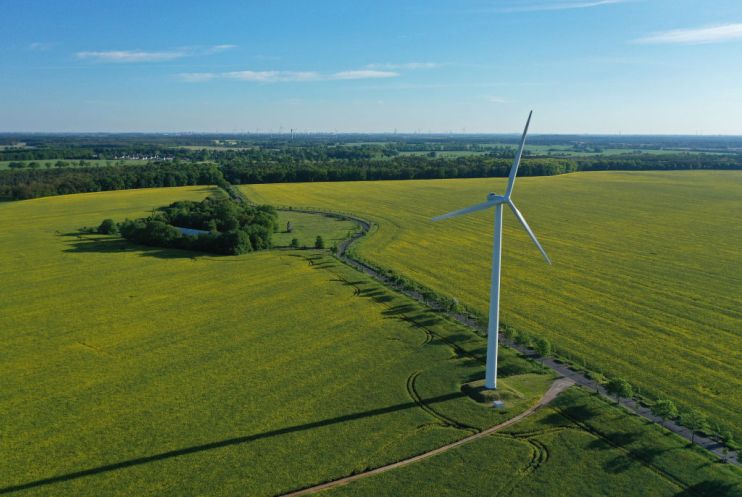Exclusive: Green groups call for red-tape cuts to ramp up onshore wind

One of the UK’s leading energy bodies has urged the Government to cut red-tape blocking onshore wind developments to help drive down record household bills.
James Robottom, head of onshore wind at industry body RenewableUK described the stagnation of projects in recent years as a “de-facto ban” and a “real missed opportunity for UK energy security.”
He told City A.M.: “We’re trying to tackle the current cost of energy crisis with one hand tied behind our back by leaving one of the cheapest and most rapidly deployable forms of energy generation out in the cold. The new PM needs to do everything possible to enable the shift from expensive gas to low-cost renewables as rapidly as possible and most people agree that if local communities support having a wind farm nearby, they should go ahead.”
Since 2015, wind farms have required consent for developments to go ahead – with sites needing to be approved in plans established by residents with local authorities across England.
Firstly, they must identify any community concerns or objections and demonstrate clear responses to those issues.
This includes proving they have the backing of local communities – although the criteria around this is vague.
Developers also have to show that the proposal is located in area designated for renewable energy in a local plan.
These requirements have empowered local authorities to make decisions over what gets built in their own communities, but at the cost of onshore wind generation, which has since stagnated.
Currently, only 11 per cent of local authorities across England have designated areas for renewable developments in their plans, according to Dr Rebecca Windemer at the University of the West of England,
Her research reveals the maximum installed capacity of wind farms (in MW) granted planning permission between 2016-2021 is just 2.6 per cent of those granted permission between 2009-2014.
Rebecca Newsom, head of politics at Greenpeace UK, argued that removing impediments for onshore wind should be “top of the next PM’s to-do list” to tackle the cost-of-living crisis, alongside renewable expansion in the North Sea and training more people for green jobs.
She said: “Things like investing to insulate homes, getting rid of red-tape blocking cheap and affordable onshore wind, future-proofing our North Sea with renewables and ensuring we have a skilled-up workforce to deliver those things. These issues couldn’t be closer to home, there’s clear demand from voters wanting to see these things sorted and the next PM has to get a grip on them.”
While the UK is home to 14.2GW of onshore wind, the Government has not included any targets to further boost generation in its energy security strategy.
Instead, its targets only include offshore wind – with the UK aiming for 50GW of generation capacity by the end of the decade.
Currently, the UK generates 11.3 GW from offshore wind developments across domestic waters, with a further 86GW in various stages of planning and development.
More than three-quarters of the public are in favour of windfarms being built in the UK, according to an Opinium poll carried out for the Observer following the publication of the energy security strategy earlier this year.
The poll even revealed 79 per cent of Tory voters were strongly or somewhat in favour of windfarms being installed in the UK, compared with 83 per cent of Labour voters and 88 per cent of Lib Dems.
Two-thirds of all voters said they would be happy for a windfarm to be built near them.
It is unclear what the views of Foreign Secretary and Tory leadership frontrunner Liz Truss are when it comes to energy efficiency and onshore wind developments – however, she is in favour of fracking, if it is backed by local communities.
City A.M. has approached her team for comment.